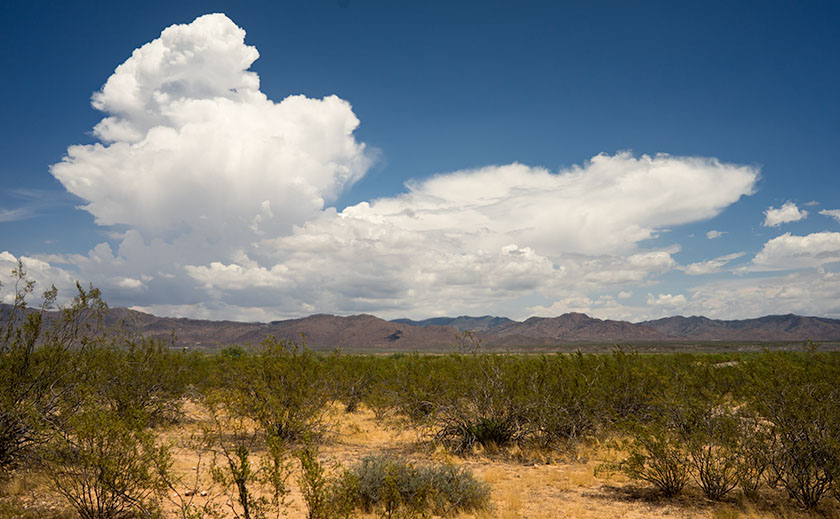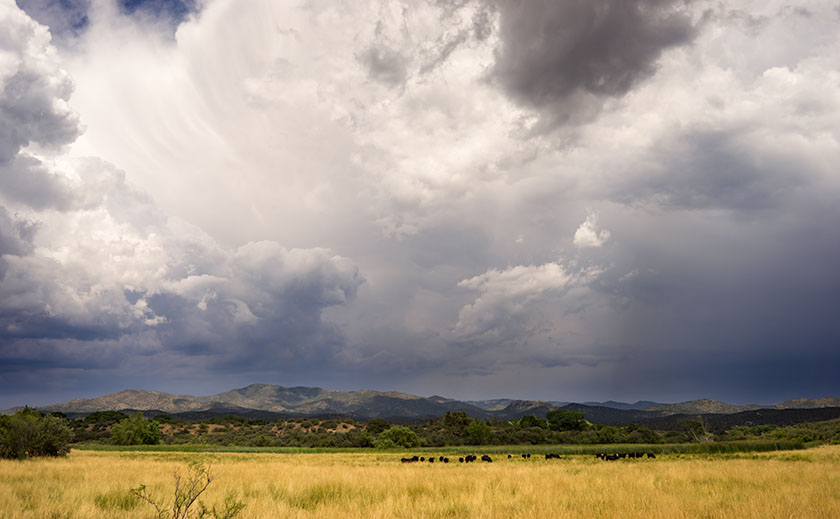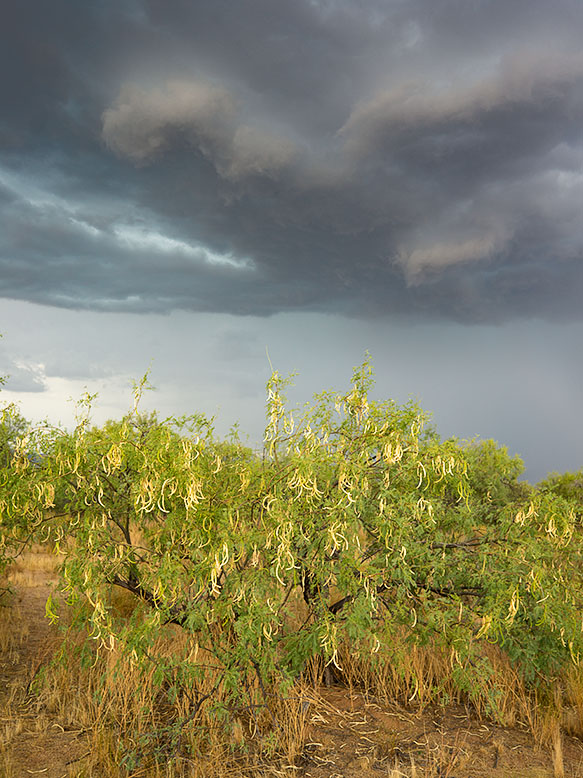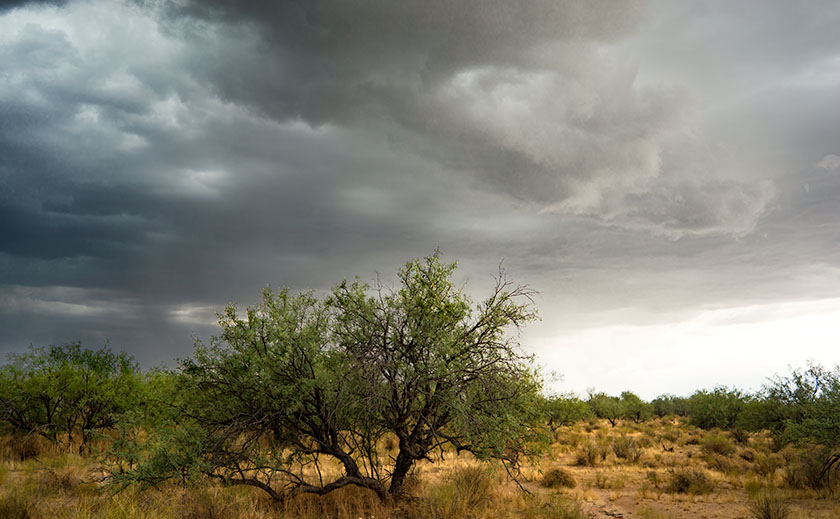It’s raining this morning, a steady gentle shower that’s driven the outside temperature down to 73°. That’s the lowest reading I’ve seen on our outside thermometer all month. The rain postponed our morning walk until it let up. We made it through most of our route before Queen Anne felt a couple of drops and began screeching, “I’m melting.” By the time we made it back to the house, the point on her black hat flopped over into her face. I’m afraid that she looked like a bit of a cartoon.
It’s been a decent monsoon season so far. We’re getting rain every other day. There’s enough to fill Lake What-A-Muck-A until the waters lap onto the pavers out back. The ground is damp, the saguaros have plumped again and some of the cacti have begun to bloom for the second time.
There’s enough moisture coming up from Mexico that the thunderheads form over the plateau behind the Weaver Range each afternoon. We watch them as they boil in slow motion until they anvil out and spread in their direction of travel. As the hot air rises down here on the desert basin, it acts like a vacuum, sucking the thunderstorms off of the mountain. Here at the house, with our views to the horizon, we watch as the lightning and rain cells pass to the north and south of us. But sometimes, we’re in the path. It’s like playing dodgeball while standing still.

First, come the outflow winds which can gust over 60 mph. That’s why we keep the tree out front trimmed up, so the wind can blow through the top canopy instead of breaking off limbs or blowing the tree over. In the neighborhood, we’ve had nearly a half-dozen century agaves bloom, with a 20-30 foot phallic center shoot. The Christmas tree like stalk gives the wind enough leverage to rip the roots of the four-foot blue agaves right out of the ground.

Following the wind is rain. Sometimes it’s only a drop or two that leave spots on your dust-covered car. Other times it’s a gully washer and the streets fill like rivers. Out on the desert floor, the washes run with fast-flowing muddy red water; those are the flash floods that are dangerous even if your miles downstream. Every once in a great while, Mexico sends up enough moisture that you get a long-lasting gentle rain, like today. It’s slow enough that the ground has time to absorb it.

Conveniently, the rains usually arrive in time for sunset cocktails, and we sit out on one of the covered porches while enjoying a glass of wine. It’s a popular summer past time in Arizona. The temperature drops 10 to 20 degrees below the century mark. The lightning show is always spectacular and can last for hours. With a stiff breeze and the moisture; it’s pleasant outside, besides you have to hold down the furniture somehow.

It ends abruptly. Shortly after the rain stops, the sweltering black top evaporates the last of the street’s water like hot sauna rocks. The wind dies and the humidity closes in. When it becomes intolerable, you retreat back into the air conditioning, if the power’s still on. There’s time for a TV show before watching the weather. It’s important to find out how the rest of the valley fared before calling it a night.
Till then … jw
